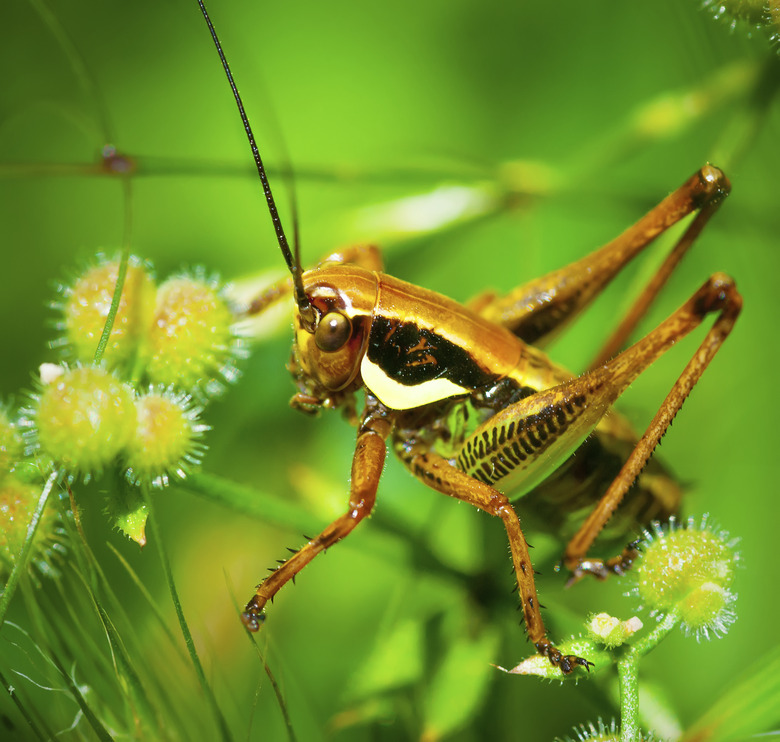How To Get Rid Of Grasshoppers & Crickets
Despite their apparent ability to chirp the correct temperature or their appeal as beloved cartoon characters, crickets and grasshoppers (Orthoptera) lose their charm when they invade your yard. Populations of these creatures are cyclic — several years can pass with only the occasional sighting in your garden.
Despite their apparent ability to chirp the correct temperature or their appeal as beloved cartoon characters, crickets and grasshoppers (Orthoptera) lose their charm when they invade your yard. Populations of these creatures are cyclic — several years can pass with only the occasional sighting in your garden. In outbreak years, grasshoppers and crickets can decimate plants, trees and shrubs. Chemical treatment is unnecessary for small populations and ineffective on larger infestations, but there are ways to rid your yard of these jumping pests.
Border Patrol
Grasshoppers and crickets thrive in grassy habitats including pastures, vacant lots and roadsides. Disturbances or food scarcity in these areas cause the insects to move to more favorable habitats such as your yard or garden. A border of uncut vegetation around your property provides shelter and food for the pests and prevents them from migrating into your yard. Tilling the soil of these border areas in late summer discourages egg laying, resulting in fewer pests the following spring.
- Despite their apparent ability to chirp the correct temperature or their appeal as beloved cartoon characters, crickets and grasshoppers (Orthoptera) lose their charm when they invade your yard.
Keep it Clean
Make your yard unattractive to grasshoppers and crickets. Regular lawn mowing, weed removal and clean-up of organic waste around the yard will keep the pests away. Firewood stacks and rock piles around your yard are perfect hiding places for these nuisance bugs. Eliminate grasshopper and cricket shelters on your property to expose the bugs to the elements and to predators.
Predators and Protozoa
Birds, lizards, toads and spiders are all natural predators of grasshoppers and crickets. Attract birds to your yard with a small birdhouse or a well-maintained birdbath. If your municipality permits it, consider introducing poultry to your bug-infested yard. Hungry hens will devour the pest insects. Resist the temptation to destroy spider webs or kill spiders outside — they keep pest populations low. Another natural enemy of grasshoppers and crickets is the protozoan Nosema locustae. A microbial treatment of N. locustae combined with bran is commercially available from garden suppliers. When there is no rain forecast for at least eight hours, apply the treatment by hand or with a spreader while the insects are in their immature stages (late spring or early summer). When ingested, the spores of the protozoan kill the grasshoppers and crickets.
- Make your yard unattractive to grasshoppers and crickets.
- Eliminate grasshopper and cricket shelters on your property to expose the bugs to the elements and to predators.
Night and Day
Crickets tend to be more active at night and, like many other nocturnal insects, are attracted to lights. Turn off exterior lighting to prevent an influx of crickets to your garden or even inside your home. Grasshoppers are diurnal creatures but are sluggish in the early morning. For minor grasshopper problems, use an insect net to capture slow-moving grasshoppers in the morning and place them in a sealed container for disposal.
